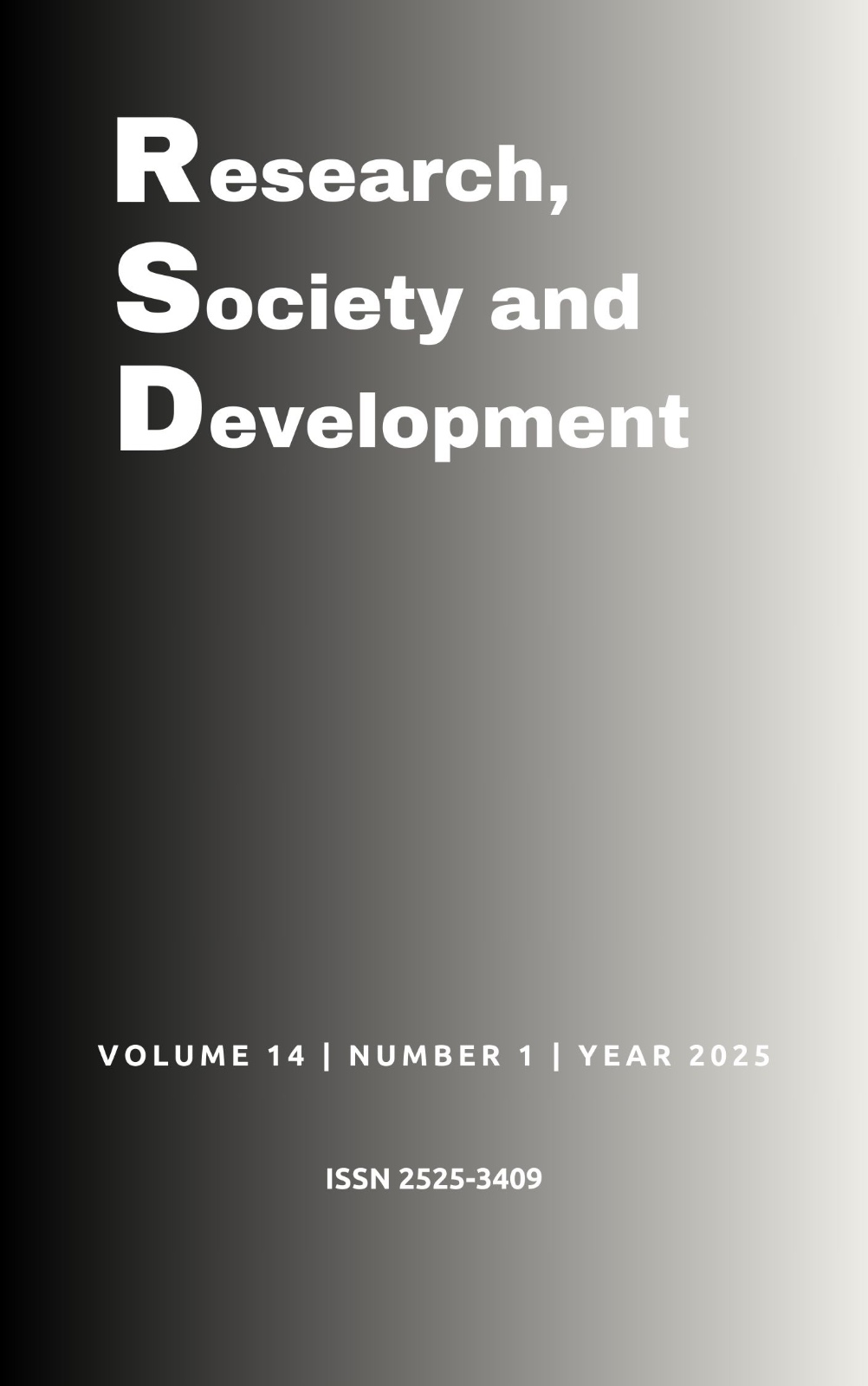The use of oral propranolol in the treatment of retinopathy of prematrity: Case report
DOI:
https://doi.org/10.33448/rsd-v14i1.47944Keywords:
Retinopathy of prematurity; Infant, premature; Propranolol; Health teaching; Teaching.Abstract
Introduction: Retinopathy of prematurity (ROP) is one of the leading causes of blindness in children, primarily affecting newborns with very low birth weight and gestational age. It is a condition that requires timely screening and detection to guide treatment improvement. Current therapies are invasive, expensive, and partially effective. Recently, oral propranolol has been shown to be effective in preventing or treating pre-threshold retinopathy with good results. Objectives: To report the clinical case of an extremely premature infant diagnosed with retinopathy of prematurity who received oral propranolol and showed considerable improvement in the condition. Methodology: Data were obtained from the electronic and paper medical records. The study will begin after the informed consent form (ICF) is completed by the patient's legal guardian and approval by the Research Ethics Committee. This is an observational and descriptive study, without a control group, in the form of a clinical case report. Results/Conclusion: Its scientific relevance lies in the importance and need for new therapeutic resources, less invasive, for a condition so common in premature infants.
References
Avery, R. L., Pearlman, J., Pieramici, D. J., et al. (2006) Intravitreal bevacizumab (Avastin) in the treatment of proliferative diabetic retinopathy. Ophthalmology. 113, 1695-705.
Bancalari, A., & Shade, R. (2020). Retinopatía del prematuro: Actualización em detección y tratamento. Rev Chil Pediatr. 91(1), 122-130
Bancalari, A., Shade, R., Muñoz, T., et al. (2016). Oral propranolol in Early stages of retinopathy of prematurity. J. Perinat. Med.
Bancalari, A., & Schade, R. (2022). Update in the Treatment of Retinopathy of Prematurity. Am J Perinatol. 39(1), 22-30.
Bancalari, A., Schade, R., Pena, R., & Pavez, N. (2014). Intravitreal bevacizumab as single drug therapy for retinopathy of prematurity in 12 patients. Arch Argent Pediatr. 112, 160–3.
Cavallaro, G., Filippi, L., Bagnoli, P., et al. (2014) The pathophysiology of retinopathy of prematurity: an update of previous and recente knowledge. Acta Ophthalmol 92(01), 2–20
Cayabyab, R. & Ramanathan, R. (2016) Retinopathy of prematurity: therapeuticstrategies based on pathophysiology. Neonatology. 109(04), 369–376
Chen, J., Joyal, S. J., Hatton, S. J. et al. (2012). Propranolol Inhibition of-Adrenergic Receptor Does Not Suppress Pathologic Neovascularization in Oxygen-Induced Retinopathy. Investigative Opthalmology & Visual Science 53(6), 2968-77
Chen, J., & Smith, L. E. H. (2007). Retinopathy of prematurity. Angiogenesis. 10, 133–140.
Conselho Brasileiro de Oftalmologia, Sociedade Brasileira de Peditria. (2011). Projeto Diretrizes Retinopatia Da Prematuridade. Associação Médica Brasileira e Conselho Federal de Medicina.
Fierson, W. M. (2018) American Academy of Pediatrics Section on Ophthalmology; American Academy of Ophthalmology; American Association for Pediatric Ophthalmology and Strabismus; American Association of Certified Orthoptists. Screening examination of premature infants for retinopathy of prematurity. Pediatrics 142(06),1–9
Filippi, L., Cavallaro, G., Bagnoli, et al. (2013) Oral propranolol for retinopathy of prematurity: risks, safety concerns, and perspectives. J Pediatr. 163(6), 1570-1577.e6.
Good, W. V. (2003). Final results of the early treatment for retinopathy of prematurity (ETROP) randomized trial. Arch Ophthalmol. 121, 1684–94.
Haigh, J. J., Morelli, P. I., & Gerhardt, H. (2003) Cortical and retinal defects caused by dosage-dependent reductions in VEGF-A paracrine signaling. Dev Biol. 262, 225-241
Jamrozy-Witkowska, A., Kowalska, K., Jankowska-Lech, I., et al. (2011) Complications of intravitreal injections-own experience. Klin Oczna. 113, 127-31.
Pardridge, W.M., Sakiyama, R., & Fierer, G. (1984) Blood-brain barrier transport and brain sequestration of propranolol and lidocaine. Am J Physiol Regul Integr Comp Physiol . 1984; 247:R582–R588.
Pereira A. S. et al. (2018). Metodologia da pesquisa científica. [free e-book]. Santa Maria/RS. Ed. UAB/NTE/UFSM. Toassi, R. F. C. & Petry, P. C. (2021). Metodologia científica aplicada à área da Saúde. (2a ed.) Editora da UFRGS.
Praveen, V., Vidavalur, R., Rosenkrantz, T., et al. (2009) Infantile hemangiomas and retinopathy of prematurity: posible association. Pediatrics. 123, e484–9.
Ristori, C., Filippi, L., & Dal Monte, M. (2011) Role of the adrenergic system in a mouse model of oxygen-induced retinopathy: antiangiogenic effects of beta-adrenoreceptor blockade. Invest Ophthalmol Vis Sci . 52, 155–170.
Rowena, C., & Rangasamy, R. (s.d.). Retinopathy of Prematurity: Therapeutic Strategies Based on Pathophysiology. Neonatology 3. 109 (4), 369–376.
Starkey, E., & Shahidullah, H. (2011). Propranolol for infantile haemangiomas: a review. Arch Dis Child. 96, 890–3.
Stritzke, A., Kabra, N., Kaur, S. et al. (2019) Oral propranolol in prevention of severe retinopathy of prematurity: a systematic review and meta-analysis. J Perinatol 39, 1584–1594.
Wallace, D, & Wu, K. (2013). Current and Future Trends in Treatment of Severe Retinopathy of Prematurity. Clin Perinatol. 40, 297-310.
Downloads
Published
How to Cite
Issue
Section
License
Copyright (c) 2025 Thainá Berto de Castro; Ana Paula Lanza Paes

This work is licensed under a Creative Commons Attribution 4.0 International License.
Authors who publish with this journal agree to the following terms:
1) Authors retain copyright and grant the journal right of first publication with the work simultaneously licensed under a Creative Commons Attribution License that allows others to share the work with an acknowledgement of the work's authorship and initial publication in this journal.
2) Authors are able to enter into separate, additional contractual arrangements for the non-exclusive distribution of the journal's published version of the work (e.g., post it to an institutional repository or publish it in a book), with an acknowledgement of its initial publication in this journal.
3) Authors are permitted and encouraged to post their work online (e.g., in institutional repositories or on their website) prior to and during the submission process, as it can lead to productive exchanges, as well as earlier and greater citation of published work.

